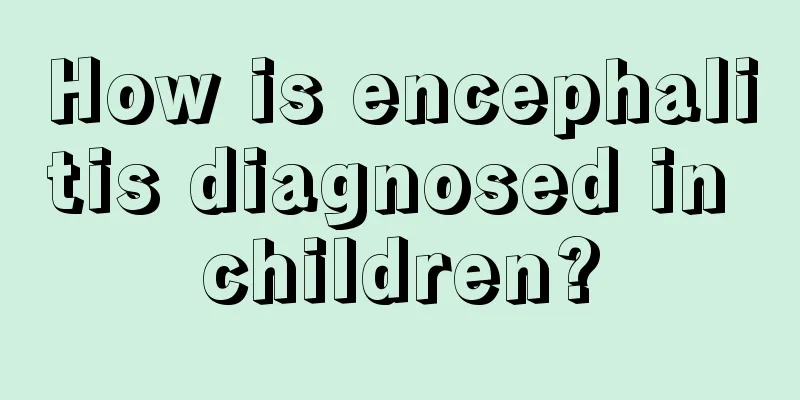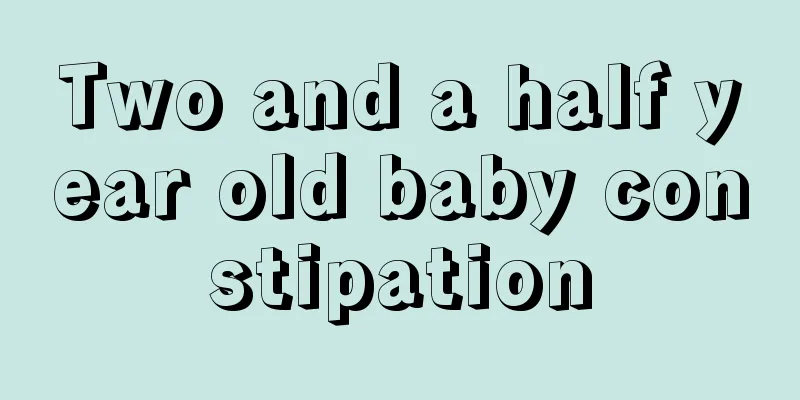Two-year-old baby's head bone protrudes

|
As children grow, problems are more likely to occur because their bones are relatively soft. If parents find that their two-year-old baby has protruding bones on the top of his head, they should first take the child to the hospital for examination to avoid bone mutations caused by other diseases. If no other diseases are found, it may be some bad living habits that cause problems with the baby's bones. A protruding forehead and children crying in the middle of the night are symptoms of calcium deficiency. In this case, the baby can be given calcium gluconate, and the mother can also take Diqiao calcium. Generally, it is enough to supplement it for one or two months, and once every six months. There is no need to worry too much. As long as the baby's spirit, complexion, appetite, etc. are good and his weight is increasing normally, there is no need to worry. What habits are not conducive to the baby's bone development? 1. Soft mattresses are not conducive to spinal development. During the development of a baby, large parts of the baby's skeleton are easily deformed. A mattress that is too soft cannot provide good support for the baby's spine, and a bad sleeping posture is not conducive to the baby's bone development. Therefore, the key to solving the problem is to choose a small mattress that is moderately soft and hard and has support when your baby is young. 2. Dragging the baby can easily cause dislocation. Sometimes when mom and dad like to take their baby out to play, they each hold one side of the baby’s hand while they walk or swing on a swing. In addition, when the baby is just learning to walk, many people like to hold his hand while walking. If you are not careful, it may cause dislocation, so you must pay attention to safety when doing this. 3. Sleeping in the same bed can easily cause the neck to tilt. When a baby sleeps in the same bed with his mother, he will naturally sleep facing his mother's side for a long time. In the long run, this sleeping position will cause the baby's head and face to habitually tilt to one side, which may form habitual or postural torticollis, commonly known as "crooked neck". Postural torticollis is usually caused by poor sleeping posture, cuddling breastfeeding habits or some ophthalmic abnormalities. However, if you find that your baby's head and face are always tilted toward one side of the neck about two weeks after birth, you need to be alert to whether there is a lump in the neck. Once there is a hard lump that can be felt, you need to go to the hospital in time to rule out congenital muscular torticollis. |
<<: What should I do if my child has a foreign object stuck in his throat?
>>: How effective is pediatric massage for cough and fever?
Recommend
What to do if a 3-year-old child grinds his teeth while sleeping
For most people, teeth grinding is just a very co...
Causes of Autism
There are actually many causes of autism. Why is ...
What to do if your child has dandruff
The main reason why children develop dandruff is ...
Elbow dislocation in children
It is the nature of children to love playing and ...
What is the reason for the child's left side abdominal pain
Although it is a hot summer, many diseases are oc...
Introduction to the book "Secrets of Pediatric Massage"
We have said that children are the treasures of t...
What should children eat to supplement calcium, iron and zinc?
Generally speaking, if children are picky eaters,...
Massage techniques for treating indigestion in children
Because they are greedy and some babies eat a lot...
What is the cause of cerebral palsy in children?
If a child has symptoms such as fever, do not und...
Treatment of acne in newborns
Acne in newborns has a great impact on our appear...
What causes baby's palms to sweat?
Today's babies are the sweethearts of the fam...
What to do if your 3-year-old baby is allergic to milk
The birth of a baby brings infinite joy to the wh...
How should I supplement calcium if my baby is severely deficient in calcium?
Calcium is very important for infants and young c...
The reasons why children have thinning hair cannot be ignored!
Many mothers watch their children grow up day by ...
Baby's chronic urticaria
Urticaria is one of the more common diseases in c...









